What Type of Beef to Use?
This recipe used Round tip – but any beef that is lean and cheap works.
Other cuts to look for:
- Top round
- Bottom Round
- Eye of Round
- Brisket Flat
- Flank steak
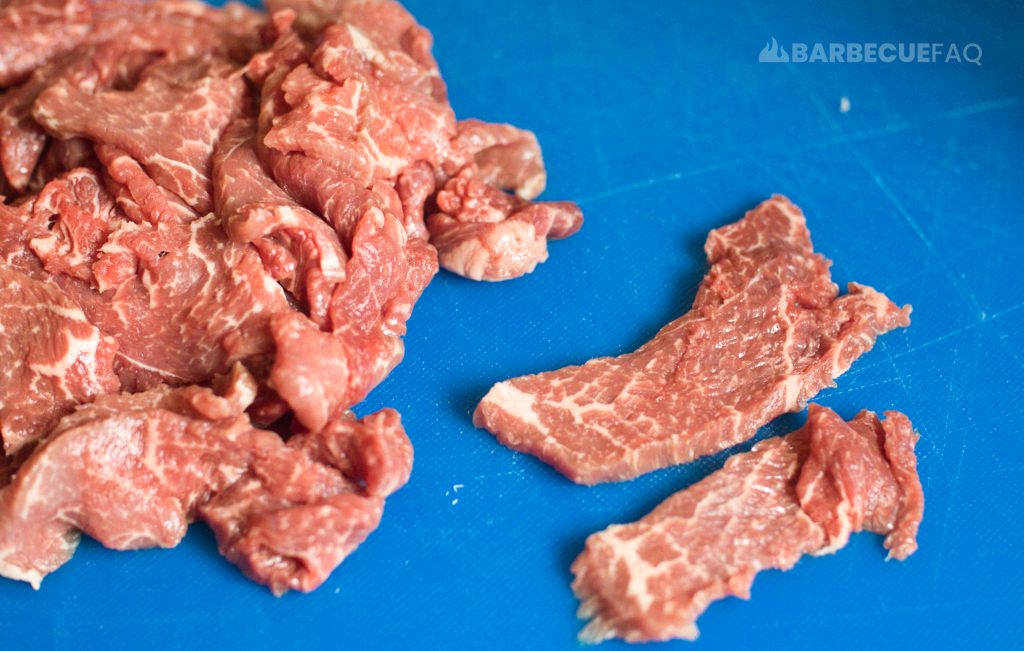
If your goal is simply preservation, look for a cut that completely lacks fat.
Slicing the Meat to Make Jerky
The way that you choose to slice will depend on your taste preferences:
- For tender/soft jerky – slice against the grain.
- For jerky with a “tug” – slice with the grain.
If you need more help identifying grain direction, check out this article.
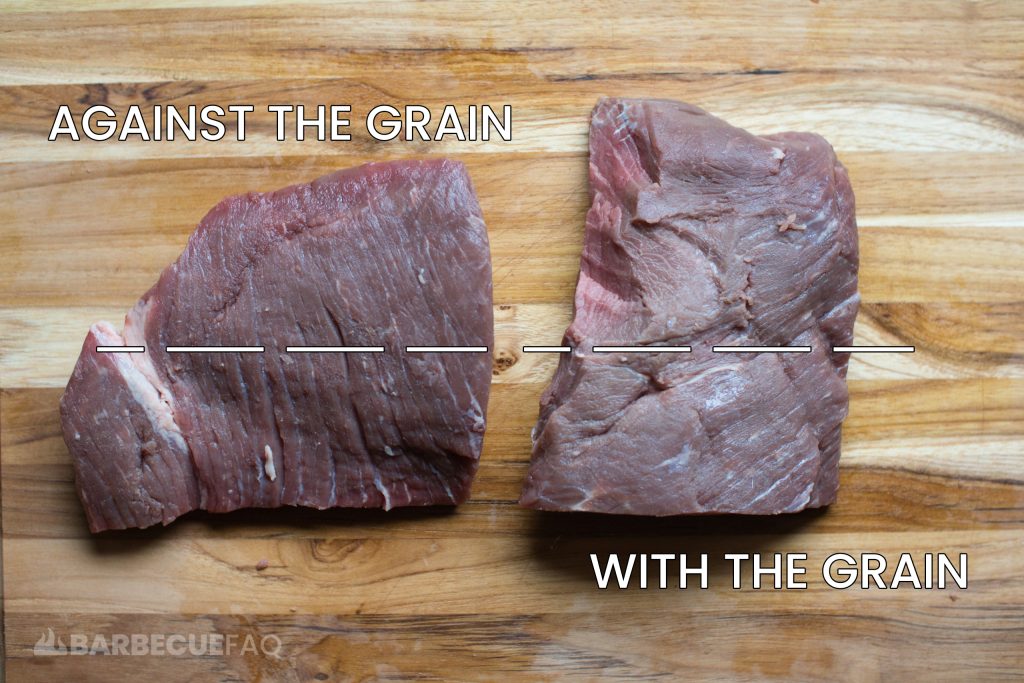
You also want to slice the meat roughly 1/8-1/4″ thick.
This thickness will ensure that the meat can dehydrate in a timely manner (~3-5 hours) and ensures the marinade can penetrate.
Wicked Hot Beef Jerky Marinade
This marinade is for ~1 lb of beef.
- 1/3 Cup Water
- 1/4 cup Kikkoman Teriyaki Sauce (low sodium)
- 2 Tbsp Lea and Perrins Worcestershire Sauce
- 1/3 Cup molasses
- 1/2 Tbsp 16 Mesh (coarse ground) Black Pepper
- 1/2 Tsp Cobanero Chili
- 1/2 Tbsp Granulated Garlic
- 1/2 Tbsp Granulated Onion
- 1/2 Tbsp Red Jalapeno Flakes
- 1/2 Tbsp Red Pepper Flakes
- 3/4 Tbsp Morton Kosher Salt
- 1/4 Tsp Citric Acid
Marinating the Beef Jerky
In a ziplock bag or non-reactive container, combine your marinade ingredients and then add your sliced beef.
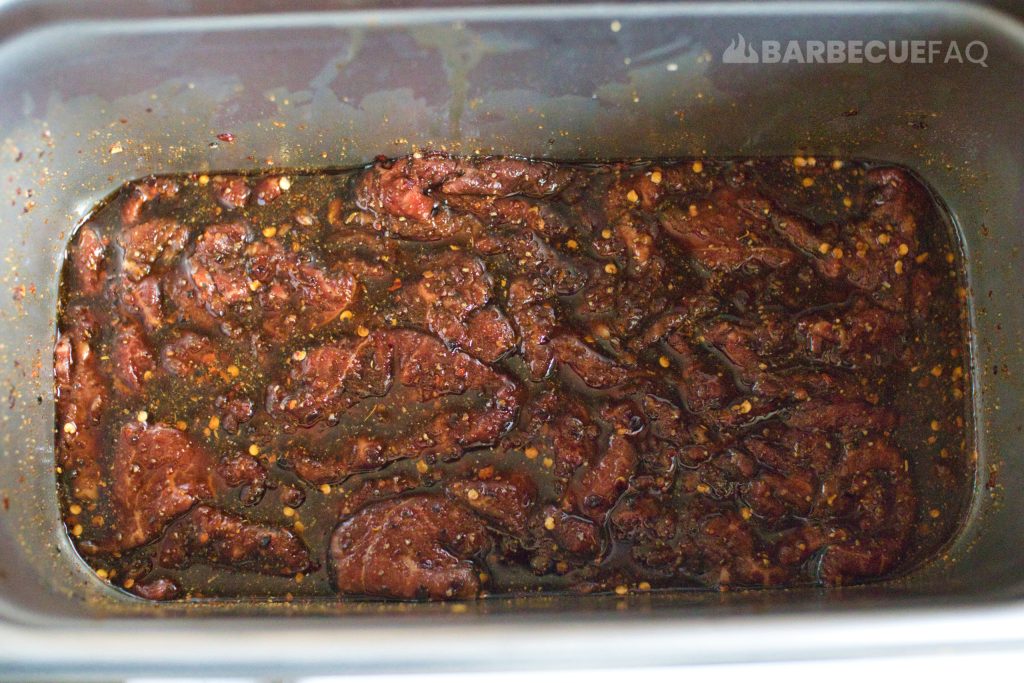
Allow the meat to marinade for at least 2 hours or overnight.
Heat Treating the Beef Jerky
I like to heat treat my beef jerky so that I can dehydrate at a lower temperature – I find the jerky is much softer this way.
Set your oven to 350F.
Line a baking sheet with aluminum foil and then place metal cooling racks on top:
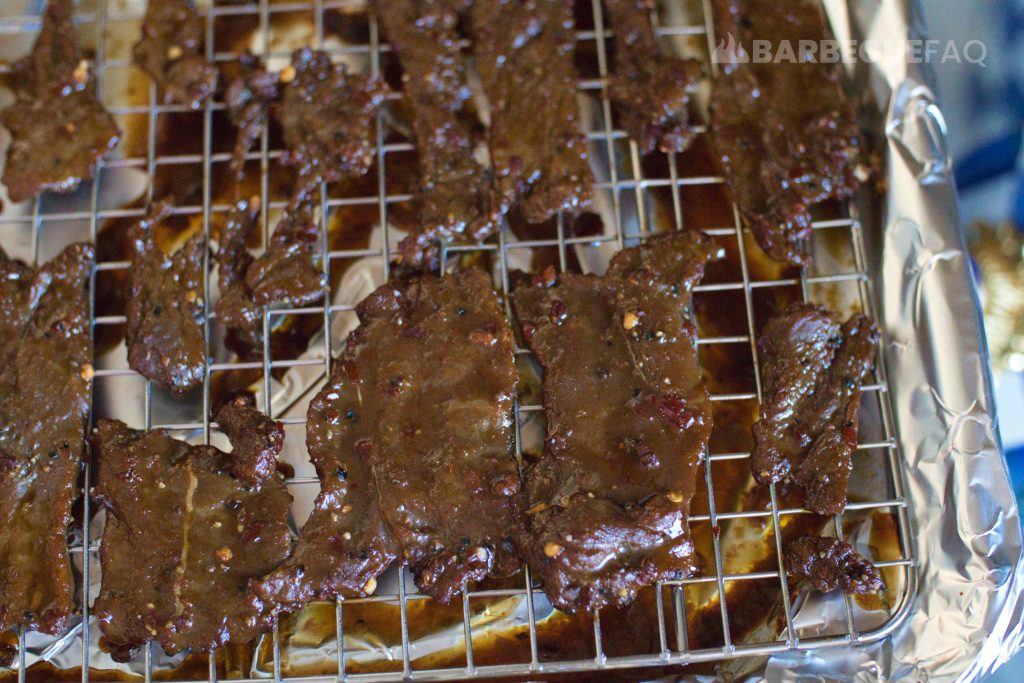
Put your beef jerky on top of the cooling racks.
Once pre-heated, put your baking sheet in the oven on the middle rack for 10 minutes.
While your jerky is heat treating, set your dehydrator to 130-140F.
Dehydrating the Jerky
Once the beef jerky is heat treated, transfer the strips to your dehydrator trays and allow the meat to dehydrate for at least 3 hours.
After 3 hours, start checking for doneness.
Checking the Jerky for Doneness
Usually jerky meat that is sliced to 1/8″ – 1/4″ will finish in 3-5 hours.
At 3 hours, take a few strips out of the dehydrator that you suspect are done.
Allow them to cool for 5-10 minutes. Once cooled, take a piece and bend/tear.
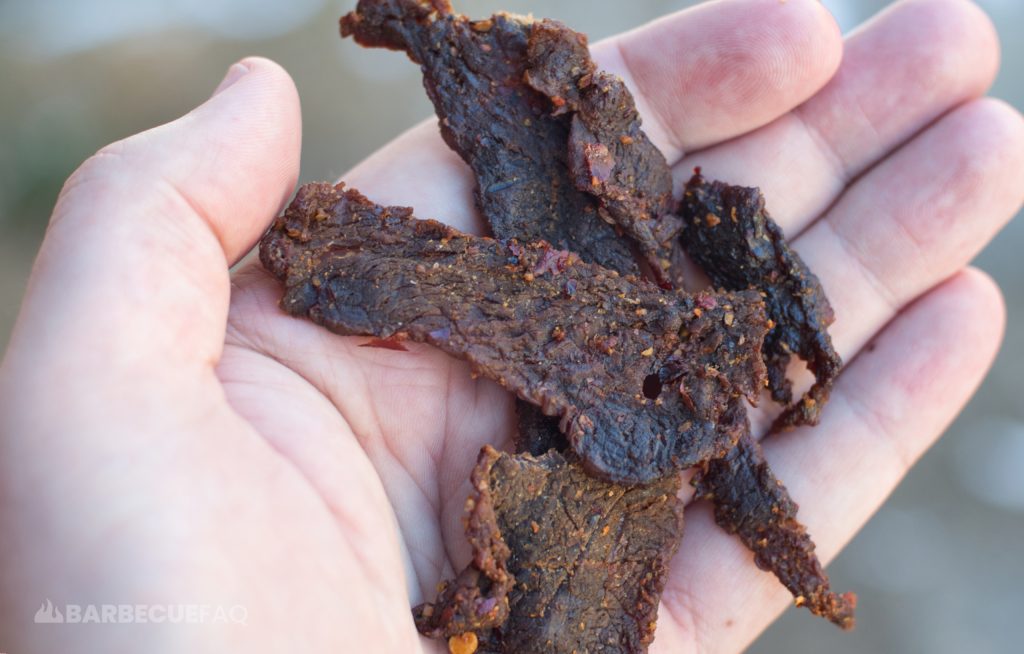
If the jerky feels like rubber and the bend has visual hues of red/pink – it’s not done and needs to keep dehydrating.
Store in a Ziplock Bag
As your beef jerky finishes, transfer it to a ziplock bag with the top open. This will allow the jerky to aerate and ensures steam doesn’t get trapped.
Once the jerky is completely cooled, zip the top and store in a cool, dry, dark place.

Wicked Hot Beef Jerky
Ingredients
- 1 lb Beef Round Tip
Wicked Hot Marinade
- 1/3 Cup Water
- 1/4 Cup Kikkoman Teriyaki Sauce
- 2 Tbsp Lea and Perrins Worcestershire Sauce
- 1/3 Cup molasses
- 1/2 Tbsp 16 Mesh coarse ground Black Pepper
- 1/2 Tsp Cobanero Chili
- 1/2 Tbsp Granulated Garlic
- 1/2 Tbsp Granulated Onion
- 1/2 Tbsp Red Jalapeno Flakes
- 1/2 Tbsp Red Pepper Flakes
- 3/4 Tbsp Morton Kosher Salt
- 1/4 Tsp Citric Acid a dash/pinch
Instructions
- Take 1 lb of lean beef and cut against the grain. Slice so that the strips are 1/8-1/4" thick.
- In a bowl combine the marinade ingredients in the specified quantities. Ensure the molasses and salt are well combined.
- In a non-reactive container or ziplock bag, add your marinade and sliced jerky. Massage the marinade into the beef.
- Put in your refrigerator to marinate for 2 hours or overnight.
Heat Treat the Jerky
- Line a baking sheet with aluminum foil. Then place oven-safe cooling racks on top. Put your marinated beef jerky on top of the cooling racks, ensure that pieces aren't touching or overlapping.
- Pre-heat your oven to 350F.
- Once pre-heated put your jerky in the oven on the middle rack for 10 minutes.
- While your jerky is heat treating, set your dehydrator to 130F.
Dehydrating the Beef Jerky
- Once your jerky is done heat treating, place your beef jerky in your dehydrator. Ensure pieces aren't touching or overlapping.
- Allow the jerky to dehydrate for 3 hours and then start checking for doneness.
Testing Beef Jerky for Doneness
- After 3 hours take a few pieces of beef jerky out of the dehydrator and allow them to cool for 5-10 minutes.
- Once cooled, bend the jerky. If at the bend you notice a "spider webbing" – it's done. If at the bend you notice the jerky is rubbery and has hues of red/pink, it's not done.
Storing the Jerky
- Once done, place in a ziplock bag with the top open and allow the jerky to aerate for 30 minutes. Once aerated zip the top and store in a cool, dry, dark place.



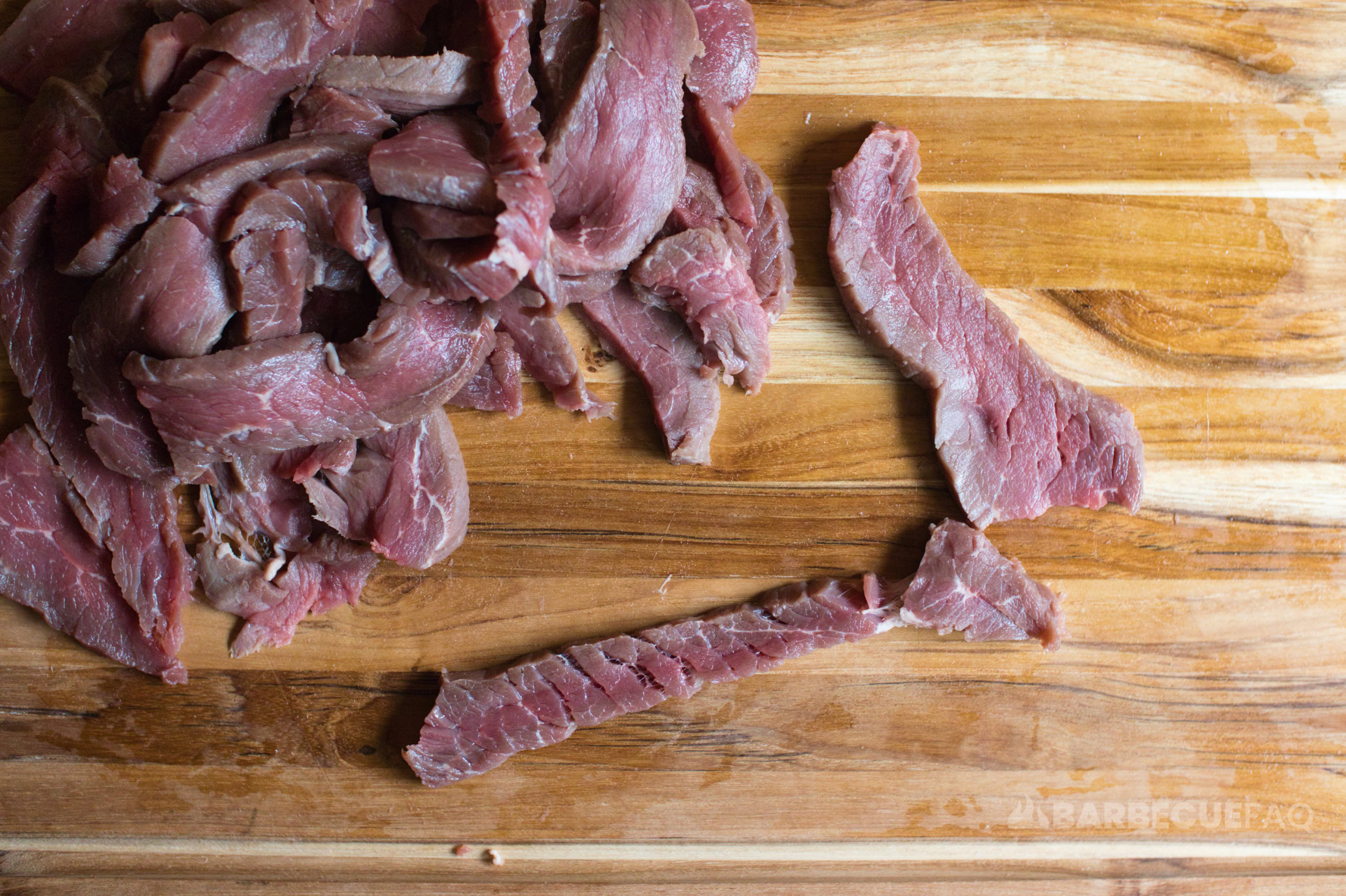
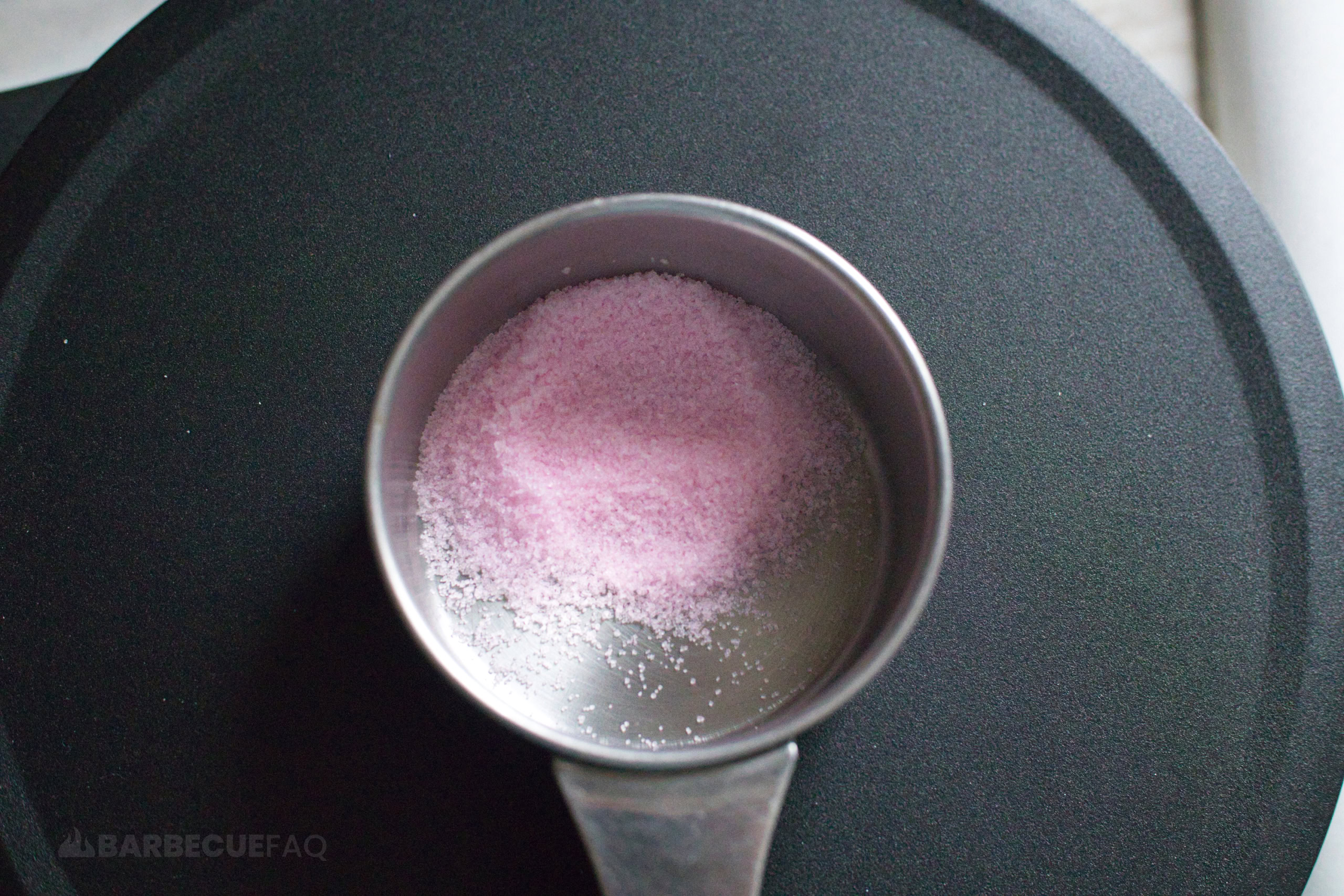
2 comments
Brock
Your jerky recipes are some of the best I’ve tried. In this one, what’s a good substitute for the Cobanero chili? Would something like cayenne work? And the citric acid, what’s the use here?
Dylan Clay
Good questions Brock and I appreciate the kind words.
So an equal amount of cayenne can work – Cobanero chilis are of a similar heat.
The citric acid improves marinade absorption and improves the tenderness of the meat. It also functions as a palette cleanse to fully let you experience the heat.
If you don’t have citric acid at home, you’d be safe to omit it here. Granted, it is cheap and a little goes a long way.